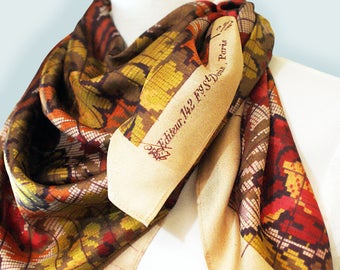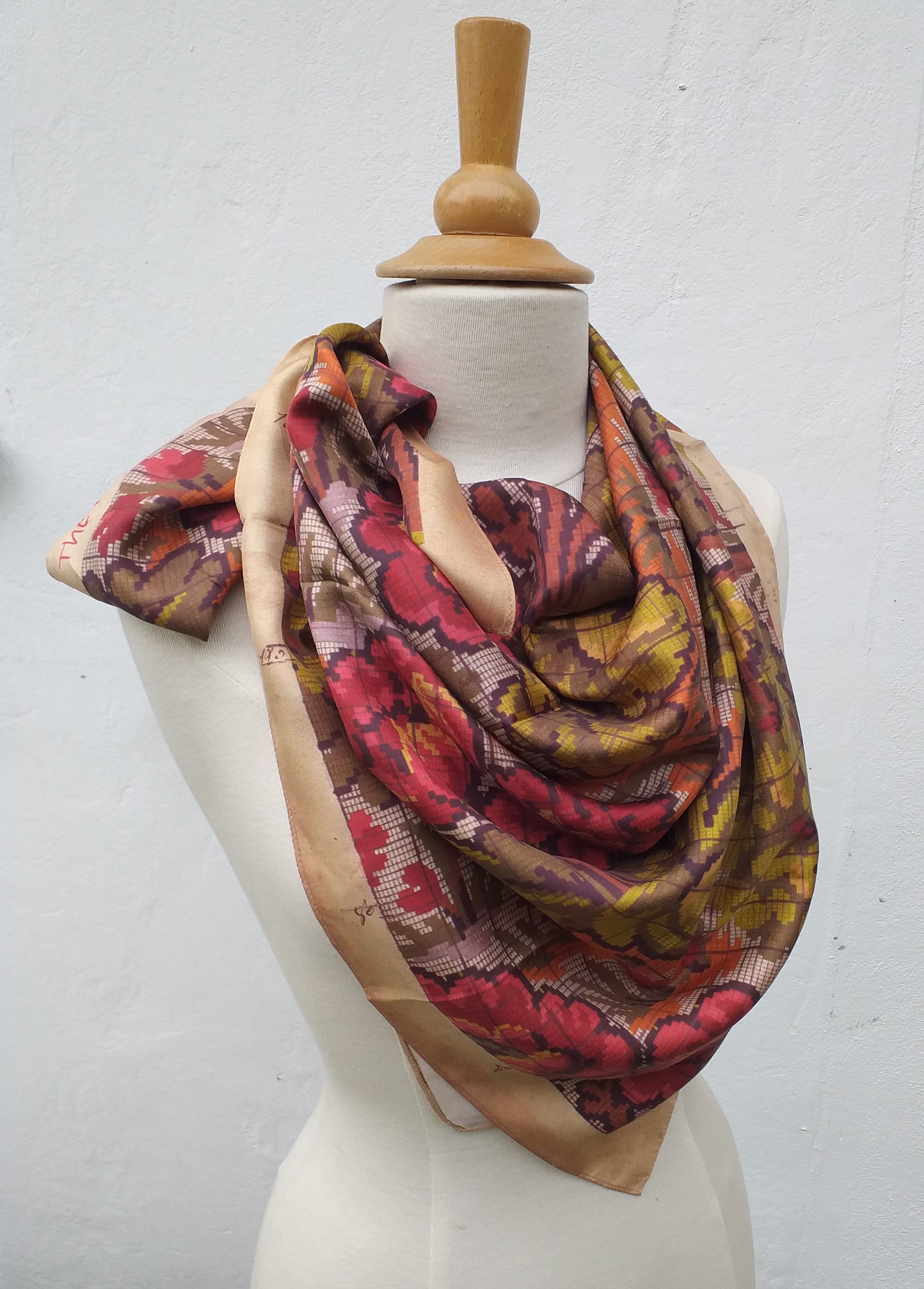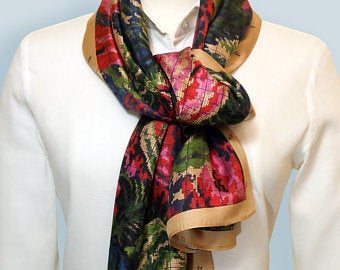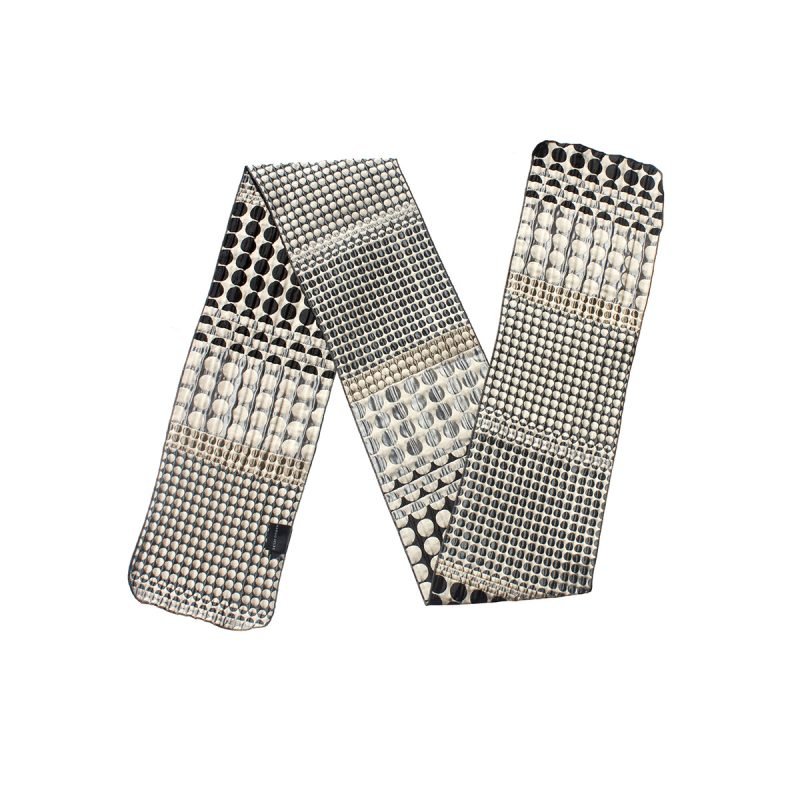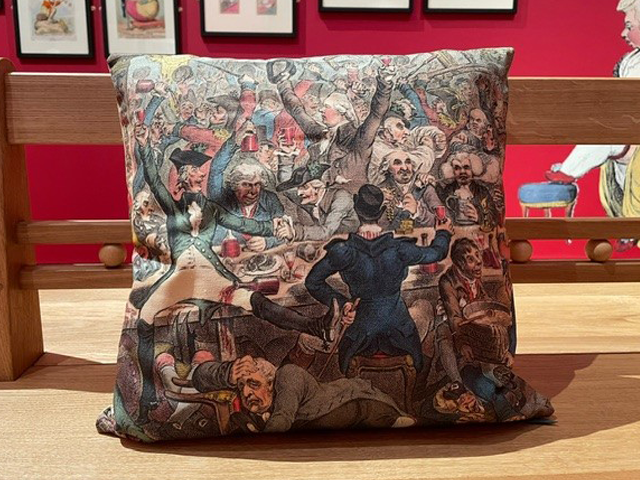Description
Dry Clean only
In 1804 in Lyons, France, master weaver Jean Marie Jacquard revolutionised the speed of the previously slow weaving process. Jacquard invented a weaving machine adaption which was controlled by a continuous chain of punched cards created from point papers. Prior to the advent of computer aided design (CAD), drawings of woven textile pattern were translated by craftsmen onto special graph paper called point papers. These detailed drawings were then coloured with the different weave plottings and then read by textile technicians, who cut the weaving instruction cards that were to be placed onto Jacquard looms that ‘read’ the binary code pattern. Using the point papers mathematical thread settings and it’s various coloured weave plottings, weavers are able to produce many different qualities of fabric, each woven with a version of the design drawn on the point paper.
Jacquard’s name is synonymous with the numerous styles of decorative patterned fabrics woven today. The Point Paper Art Company have selected designs from their archive collections to breathe new life into this historical textile craft.

